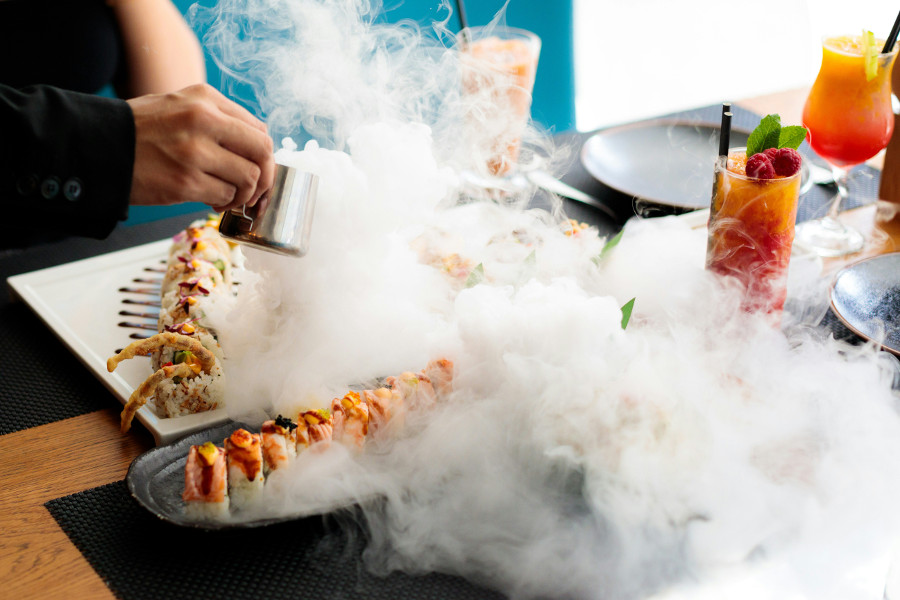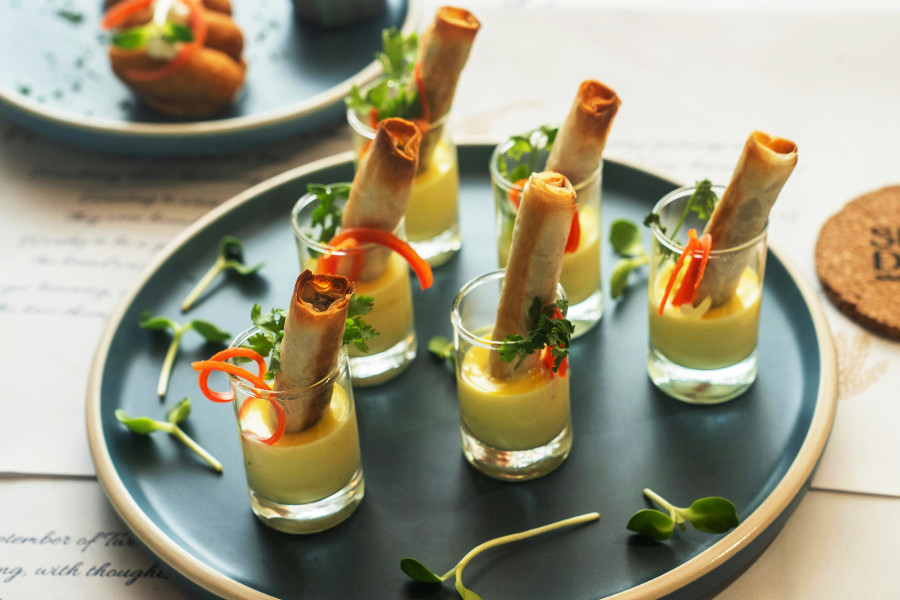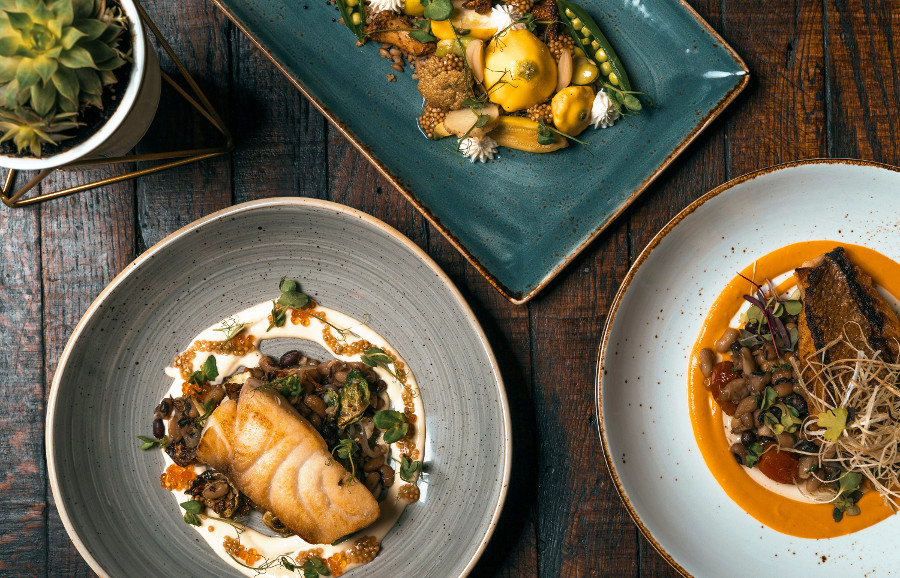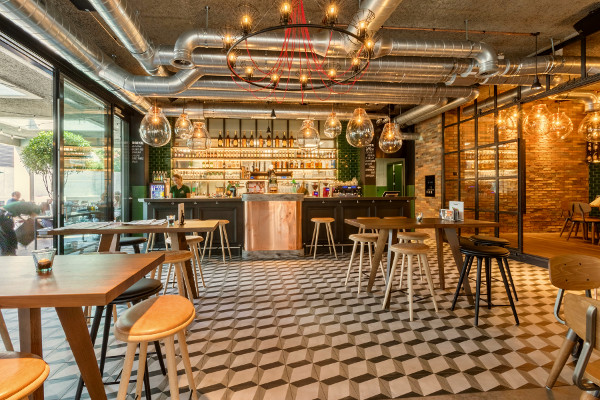Gourmet Tasting Menus 101: A Beginner’s Guide to Fine Dining
A gourmet tasting menu is a unique dining experience that allows you to explore the full range of a chef’s culinary creativity. It’s not just a meal; it’s a journey of flavors, textures, and surprises. If you’ve never experienced one before, it can be a bit intimidating. After all, what exactly is a tasting menu, and how do you approach something that’s as much about artistry as it is about food?

We live in a world where dining is no longer just about nourishment. It’s about storytelling. As we continue to see more people seeking out unique and extraordinary dining experiences, tasting menus have become a staple in fine dining. They’re a way to break away from traditional meals and experience something out of the ordinary. But if you’ve never done it before, you might be wondering: How do you prepare for this kind of experience? What should you expect, and how do you make sure you get the most out of it?
Well, don’t worry. Here’s your ultimate guide to experiencing a gourmet tasting menu for the first time.
What is a Gourmet Tasting Menu?
At its core, a gourmet tasting menu is about exploring food in its purest form. These menus feature a series of small courses, often between 5 and 15, each meticulously crafted to highlight specific ingredients, techniques, and flavors. It’s not just about eating; it’s about savoring.
These menus aren’t the type of meals you rush through. They’re designed to take you on a sensory adventure, where you can really focus on what’s on your plate. Each course is often paired with wine (or other beverages), helping to elevate the dish and enhance its flavors. The whole experience can take a few hours, but it’s designed to be a slow, intentional meal.
But here’s the thing: it’s more than just food. It’s about ambiance, service, and atmosphere. From the moment you step into the restaurant, you’re entering a world where every detail is considered. The lighting, the music, the way the dishes are presented - everything is part of the experience.
Preparing for the Experience
Before you sit down at that table, there are a few things you should keep in mind.
Book Ahead
Many high-end restaurants require reservations well in advance, sometimes weeks or even months. If you’re planning to try a tasting menu at a popular spot, don’t leave it until the last minute. Book early to secure your spot.
Communicate Your Preferences
Gourmet restaurants are known for their attention to detail, and that includes accommodating dietary restrictions. Whether you’re vegetarian, gluten-free, or have allergies, make sure to inform the restaurant when you book. Most places are more than happy to adjust the menu accordingly, but it’s important to give them a heads-up beforehand.
What to Wear
While you don’t need to wear a tuxedo, it’s important to remember that a tasting menu often takes place in a fine-dining setting. Think smart-casual at the very least. In fact, some places may have a dress code, so it’s worth checking their website in advance.
Arrive on Time
Being punctual is key in fine dining. Tasting menus are designed to flow smoothly, and arriving late could throw off the timing of the entire experience. So, show up early, relax, and get ready to enjoy.

The Structure of a Tasting Menu
So, how does it all work? Here’s the basic structure you can expect:
Small but Powerful
The beauty of a tasting menu lies in its bite-sized portions that pack a punch. Each dish is created to showcase a specific ingredient or cooking technique, and it’s often a flavor you won’t find in your typical dinner order. Expect a series of dishes that introduce you to new textures, unexpected pairings, and intense flavors.
Amuse-Bouche and Beyond
You’ll usually start with an amuse-bouche - a small, delightful appetizer meant to tease your palate and get you ready for what’s to come. After that, the courses will flow in succession, each one building on the last. You might begin with lighter flavors - fish, vegetables, or delicate textures - and move toward heavier, more complex dishes as the meal progresses.
And just when you think it’s over, a palate cleanser (often a refreshing sorbet) may be served before dessert. This helps reset your taste buds before you dive into something sweet.
Wine Pairings
For many, the true magic of a tasting menu lies in the wine pairings. As each course is served, a sommelier will present a wine designed to complement the flavors of that dish. You’ll get a new experience with every sip, as the wine enhances the flavors of the food and vice versa. But if wine isn’t your thing, many restaurants offer non-alcoholic pairings too - think sparkling water or creative mocktails designed to elevate the meal.

How to Enjoy a Gourmet Tasting Menu
It’s easy to get caught up in the excitement, but if you want to make the most of this experience, it’s important to slow down and savor each moment.
Take Your Time
Each dish is crafted to engage your senses. Instead of rushing through the courses, take the time to really appreciate the flavors. Focus on the textures, aromas, and how the dish makes you feel. Whether it’s a burst of citrus or the delicate crunch of a perfectly cooked vegetable, savor every bite.
Ask Questions
The best part about a tasting menu is that it’s all about discovery. Don’t be afraid to ask your waiter or the sommelier about the dish. If there’s an ingredient or technique that catches your eye, inquire about it. Chefs love to share the stories behind their creations, and it can deepen your understanding of the meal.
Be Open to New Things
One of the most exciting aspects of a tasting menu is that it often includes dishes or ingredients you might not encounter in a regular restaurant setting. Whether it’s something you’ve never heard of or a preparation method you’ve never seen, be open to the experience. It’s a chance to step outside your comfort zone and try something new.
Pace Yourself
It’s easy to get full, but the key is pacing yourself. A tasting menu isn’t about quantity - it’s about quality. If you feel too full, let the staff know, and they may even offer to box up some of the later courses for you to take home. After all, this is about enjoyment, not stuffing yourself.
After the Meal: What Comes Next?
Once the last course is cleared away, take a moment to reflect. What stood out? Was there a dish that surprised you, or a pairing that blew you away? This is the time to appreciate the journey you’ve just been on.
Also, don’t forget to share your thoughts. Many restaurants appreciate feedback, whether it’s a compliment or a suggestion for improvement. And if you had an amazing experience, let others know by leaving a review.
Notable websites about fine dining
Conclusion
A gourmet tasting menu is a unique experience that invites you to slow down, savor the moment, and appreciate the artistry behind each dish. It’s not about filling your stomach; it’s about engaging your senses in a way that only fine dining can offer. While it can seem intimidating at first, with a little preparation and an open mind, you’ll find yourself immersed in a culinary journey that’s as much about the food as it is about the experience. So go ahead, book that reservation, and let your taste buds explore the world.



